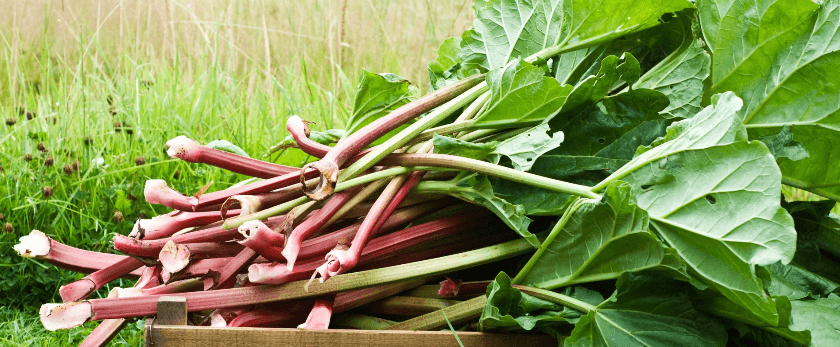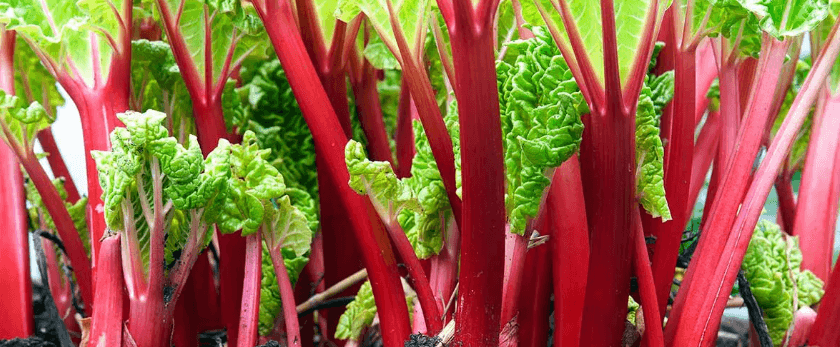Rhubarb is a versatile and delicious plant that can be grown in your own backyard. Not only is it a tasty addition to pies and jams, but it also has numerous health benefits and is easy to grow. In this article, we will discuss how to care for rhubarb, the best time to grow it, and common problems that may arise. By following these tips, you can have a bountiful harvest of rhubarb while also contributing to a greener, more sustainable future.
How to Care for Rhubarb
Watering
Rhubarb plants require consistent moisture to thrive. It is important to keep the soil evenly moist, but not waterlogged. Water your rhubarb plants deeply once a week, or more frequently during hot and dry weather. Avoid overhead watering, as this can lead to fungal diseases. Instead, water at the base of the plant to keep the leaves dry.
Light
Rhubarb plants prefer full sun, but can also tolerate partial shade. If you live in a hot climate, it is best to provide some afternoon shade to prevent the leaves from wilting. If your rhubarb is not getting enough sunlight, it may produce thin and weak stalks.
Soil
Rhubarb plants thrive in well-drained, fertile soil. Before planting, amend the soil with compost or well-rotted manure to provide essential nutrients. The ideal pH for rhubarb is between 5.5 and 6.5. You can test your soil's pH using a home testing kit or by sending a sample to a local agricultural extension office.
Fertilizer
Rhubarb plants are heavy feeders and require regular fertilization to produce healthy stalks. In early spring, apply a balanced fertilizer, such as a 10-10-10, around the base of the plant. Avoid fertilizing after mid-summer, as this can lead to weak and spindly stalks.
Pruning
Pruning is an essential part of caring for rhubarb plants. In the first year of growth, do not harvest any stalks to allow the plant to establish a strong root system. In the second year, you can harvest a few stalks, but leave the majority of the plant to continue growing. From the third year onwards, you can harvest the stalks as needed. To harvest, simply grasp the stalk at the base and pull it away from the plant. Do not cut the stalks, as this can leave open wounds that can lead to disease.

What is the Best Time to Grow Rhubarb
Rhubarb is a cool-season crop and is best planted in early spring or late fall. In warmer climates, it can also be planted in the winter. It is important to avoid planting rhubarb in the summer, as the heat can cause the plant to go dormant. If you are planting rhubarb in the fall, make sure to do so at least 6 weeks before the first frost to allow the plant to establish itself before winter.
Common Problems with Rhubarb
Pests
Rhubarb plants are relatively pest-free, but they can occasionally be attacked by aphids, slugs, and snails. To prevent these pests, keep your garden clean and free of debris, and remove any weeds that may attract them. You can also use natural pest control methods, such as introducing beneficial insects or using organic pesticides.
Diseases
The most common disease that affects rhubarb plants is crown rot, which is caused by a fungus. This disease can be prevented by planting rhubarb in well-drained soil and avoiding overhead watering. If you notice any signs of crown rot, such as wilting or yellowing leaves, remove the affected plant immediately to prevent the spread of the disease.
Bolting
Bolting is when a plant produces a flower prematurely, which can affect the quality and taste of the stalks. To prevent bolting, make sure to harvest the stalks regularly and keep the plant well-watered. If your rhubarb does bolt, you can still harvest the stalks, but they may be tougher and less flavorful.
Conclusion
Growing rhubarb is a rewarding experience that can provide you with a delicious and healthy addition to your meals. By following these tips on how to care for rhubarb, the best time to grow it, and common problems that may arise, you can have a successful harvest while also contributing to a greener, more sustainable future. So why not give it a try and start growing your own rhubarb today?










